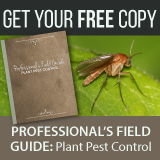

Pages: 1
| Posted: 02 Jul 2012 22:10 | |
|
Registered User Currently Offline Join Date: Jan 2011 |
Posts: 28 Reputation: 2 User Rank: 1 - Seedling 
|
|
I'm doing a little research on coir used as a soil media or component. I've found plenty of information on coir fiber and coir dust, but I'm looking for comments from any interiorscapers who have personal experience in watering and caring for plants in a coir-based media. How does it effect your watering? Are you having any nutrient problems? Do you find that fungus gnats tend to stay away?
Thanks so much, Kathy Fediw |
|
| Posted: 03 Jul 2012 00:09 | |
|
Registered User Currently Offline Join Date: Jan 2011 |
Posts: 798 Reputation: 43 User Rank: 10 - Blossom 
|
|
Hi, Kathy,
I've played with coir for some years now, mostly at home with plants in my collection of oddball succulents and tropicals of various types. I got the pure coir in compressed bricks from Hummert International, and they needed to be soaked in warm water to get them hydrated for planting. I have posted in the past about the benefits of coir used as a planting medium. First, it's the ultimate "green" medium in some respects, being the by-product of literally centuries of coconut processing in Sri Lanka and other tropical regions, with such a high lignin content that it is very resistant to decomposition, even when wet. It is also a renewable resource, since coconut cultivation has been widespread in the tropics for hundreds of years and doesn't figure to wane in economic importance anytime soon. The physical/chemical characteristics of coir that make it a great medium include a higher air-filled porosity level than many other media, excellent drainage properties, low soluble salts (provided it is obtained from inland sources to exclude sea salt), lack of chemical interaction between coir and added nutrients resulting in better nutrient availability to the roots, very good water-holding capacity, absence of pathogens, ideal pH, high cation exchange capacity and low EC (electrical conductivity). Coir is lightweight and abundant, and the only downside to its use is the cost of transportation from production areas to the end user. Clem |
|
| Posted: 03 Jul 2012 16:52 | |
|
Registered User Currently Offline Join Date: Jan 2011 |
Posts: 102 Reputation: 5 User Rank: 3 - Plant 
|
|
We recently got a batch of 10" D. mass. 4-3-2 that were planted in a high percentage (if not entirely) of coir. They seemed to dry out the same as soil, but had to be re-wet more fastidiously. When I flood D. mass. in regular soil, the water spreads out over the surface, then drains down. This did not do that. I had to be careful to water all sides of the pot...more like peat moss, although it was easier to re-wet.
In our warehouse facility, they seem to be holding up better than normal soil mix plants. I am very curious to see if the same applies out on the accounts. Julie |
|
| Posted: 03 Jul 2012 22:35 | |
|
Registered User Currently Offline Join Date: Jan 2011 |
Posts: 798 Reputation: 43 User Rank: 10 - Blossom 
|
|
Julie, we have gotten some Mass Canes in coir recently, too, and they seem to hold up better than "soil" grown ones from the same nurseries in the past. Not nearly the amount of tipping and marginal burns we often see in summertime when they come up from down South. On the accounts, techs took a little time getting used to the drydown characteristics and "schedules" of plants in coir and coir mixes, but the learning curve wasn't steep at all, and all the plants are doing well. Have seen ZZs and even cacti and succulents in the stuff recently, no problems to report.
Clem |
|
| Posted: 05 Jul 2012 22:57 | |
|
Registered User Currently Offline Join Date: Jan 2011 |
Posts: 28 Reputation: 2 User Rank: 1 - Seedling 
|
|
As a side note, I found out that one of the major suppliers of coir from Sri Lanka is just down the highway from me so I paid them a visit and they were very informative. They told me it's pronounced like "choir" not "core." Also gave me two large blocks of coir to play with. I put one in the largest plastic tub I have, filled it with water and soon had a coir "muffin" exploding out of the tub! Very light-weight once it's hydrated, looks like peat but feels grainy and has some fibers in it. Smelled a bit like tea tree oil to me. Interesting stuff!
-Kathy |
|
| Posted: 05 Jul 2012 23:20 | |
|
Registered User Currently Offline Join Date: Jan 2011 |
Posts: 798 Reputation: 43 User Rank: 10 - Blossom 
|
|
The Malay word for coir is pronounced "kayar", which is about midway between "choir" and "core"...the Malay root of the word means "to be twisted", as in using the fibers to make cord or rope. In any case, it's good stuff!
Clem |
|
| Posted: 08 Jul 2012 00:17 | |
|
Registered User Currently Offline Join Date: Jan 2011 |
Posts: 798 Reputation: 43 User Rank: 10 - Blossom 
|
|
Of course, the ideal growing medium would be hydroculture...inert so it won't decompose or harbor most insects and pathogens, weighty enough to support large plants without toppling, perfect drainage, ease of up-potting and no incompatibility between media types. Unfortunately, the industry won't buy into it for whatever reasons. It's been around in Europe for decades and their plants are poster-children for its wider use...just take a gander at the plants in the photo books like "Plants, Extra Large", many of which are grown in hydroculture. Can't argue with success!
Clem |
|
Pages: 1
Interiorscape.com is sponsored by NewPro Containers ![]() RSS 2.0
RSS 2.0 ![]() Atom 1.0
Atom 1.0













